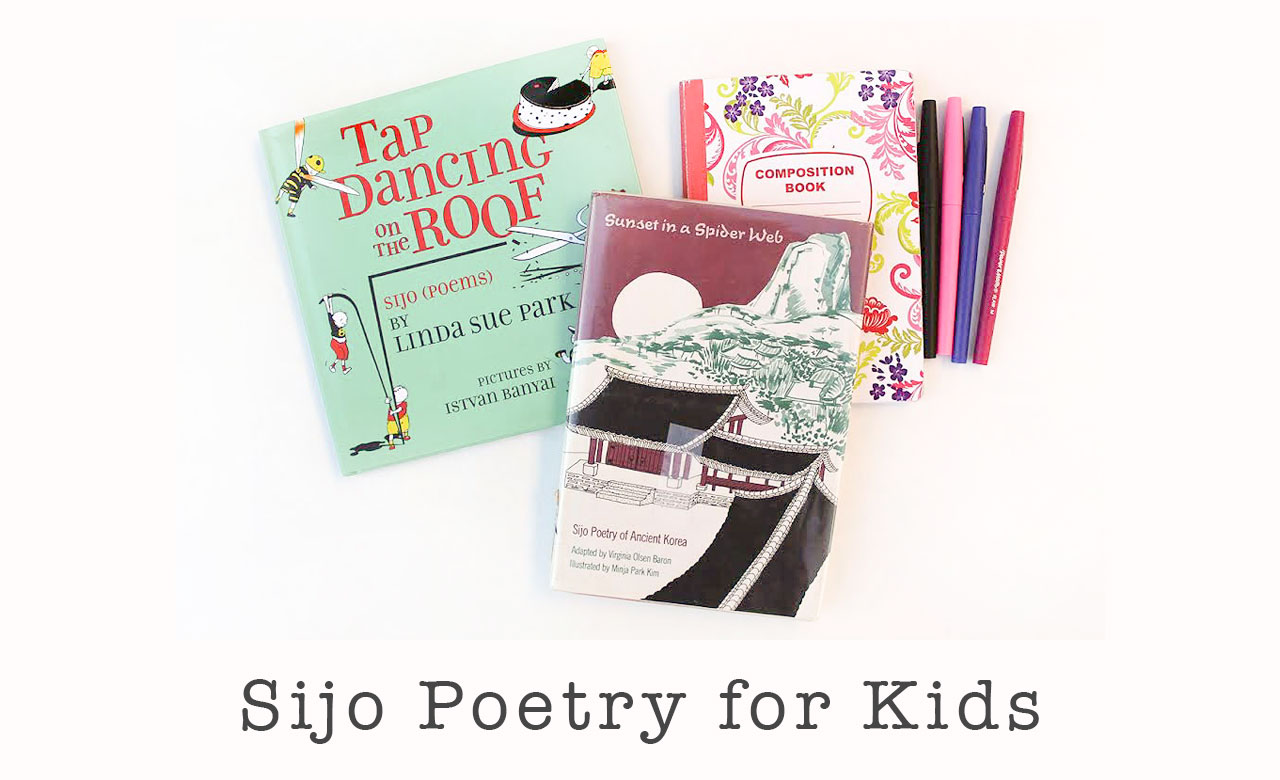Sijo Poetry for Kids
 Once our children and students start to take an interest in writing poetry, we can introduce them to some of the different types of poetry. After exploring the format and syllabic structure of Haiku poem, students may take interest in writing an ancient Korean type of poem called the Sijo poem. Sijo poems also rely on a set number of stressed syllables but are a little longer in length than a Haiku poem. The fun and inviting thing about writing a Sijo poem is that each poem ends with a quirky ending such as a joke or a related twist.
Once our children and students start to take an interest in writing poetry, we can introduce them to some of the different types of poetry. After exploring the format and syllabic structure of Haiku poem, students may take interest in writing an ancient Korean type of poem called the Sijo poem. Sijo poems also rely on a set number of stressed syllables but are a little longer in length than a Haiku poem. The fun and inviting thing about writing a Sijo poem is that each poem ends with a quirky ending such as a joke or a related twist.
One of the best places to begin exploring Sijo poetry is through Linda Sue Park’s book entitled: Tap Dancing on the Roof. In this small collection of Sijo poems Park explains how to write a Sijo poem and then invites her readers to read her examples. Her first poem: Breakfast, is a three line poem that share many delights we eat at breakfast but ends with a twist about enjoying sleeping in our nice cozy beds instead of breakfast. There are also poems about spring flowers, long division, collecting beach souvenirs and more. This is a perfect introductory collection for getting to know Sijo poetry.
Learning to write a Sijo poem will come naturally to our students’ as children often love sharing a silly, funny or twisted ending. To begin, introduce the structure of the Sijo: three to six lines with fourteen to sixteen stressed syllables for each line. Start with writing a three line Sijo poem with fourteen to sixteen syllables per line. Brainstorm a list of topic ideas: loose tooth, soccer game, my favorite donut, spring blossoms, etc. Choose a topic and try writing a poem together or separately but remember to share and compare once finished.
Donuts
Chocolate covered, vanilla crème, delightfully tasty!
What would I do without this morning treat to fill my tummy?
Mom says I will live and to make sure I gobble up my oatmeal.
Talk about editing during the writing process. How many syllables do we have? Should we change this word with a longer or short word? Is the twist funny enough? Does the poem flow well? What other topics should we write about?
Linda Sue Park ends her collection with additional information about Sijo poetry: historical background, further readings and tips for writing your own Sijo poem. I love reading author tips for writing to my students. They often perk up a little more when I tell them the author wants to give them some writing tips. For our older children and students, there is another lovely collection entitled: Sunset in a Spider Web adapted by Virginia Olsen Baron. The Sijo poems in this collection center around the theme of nature; which I think makes this collection perfect for springtime poetry explorations.
Book Resources:
- Tap Dancing of the Roof: Sijo Poems by Linda Sue Park
- Sunset in a Spider Web adapted by Virginia Olsen Baron
